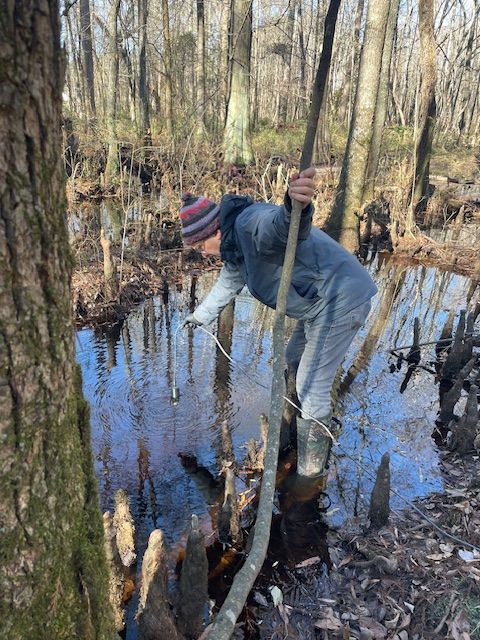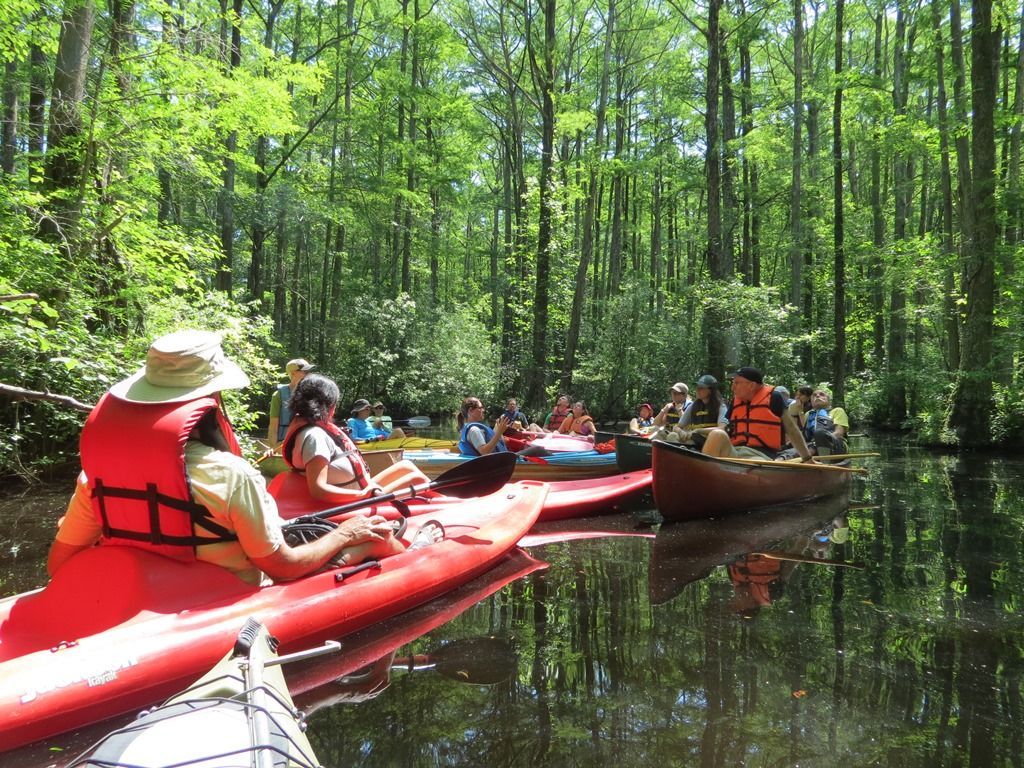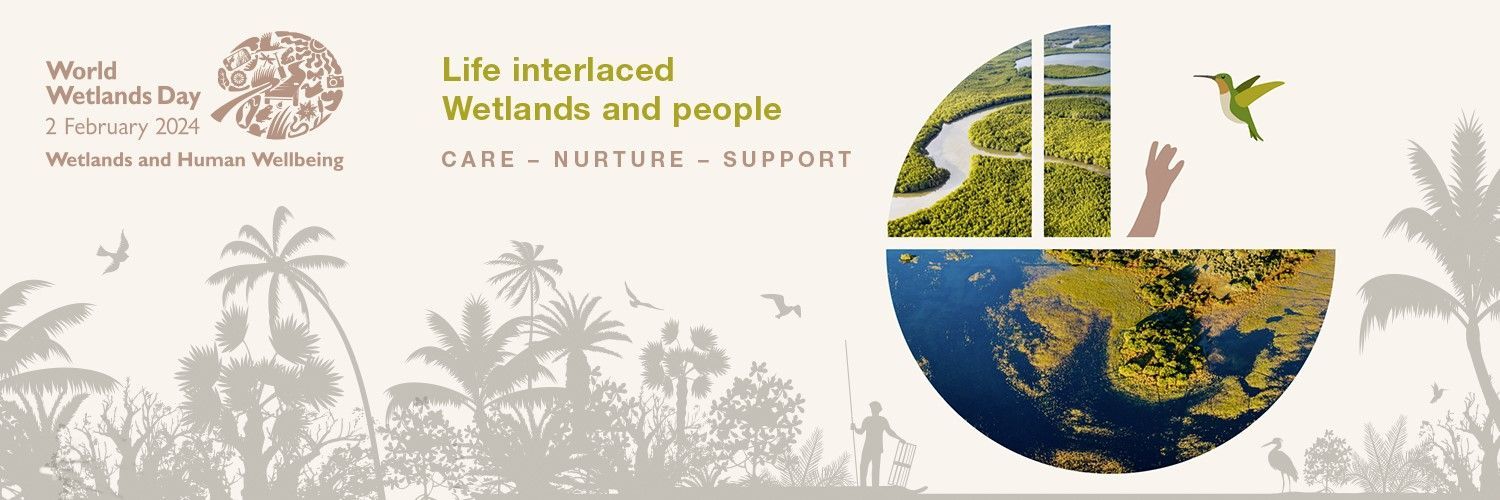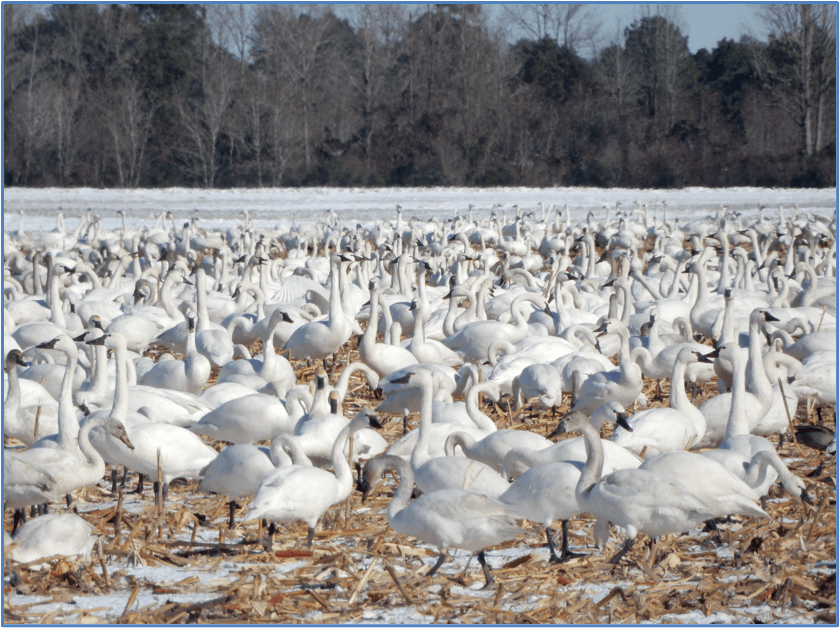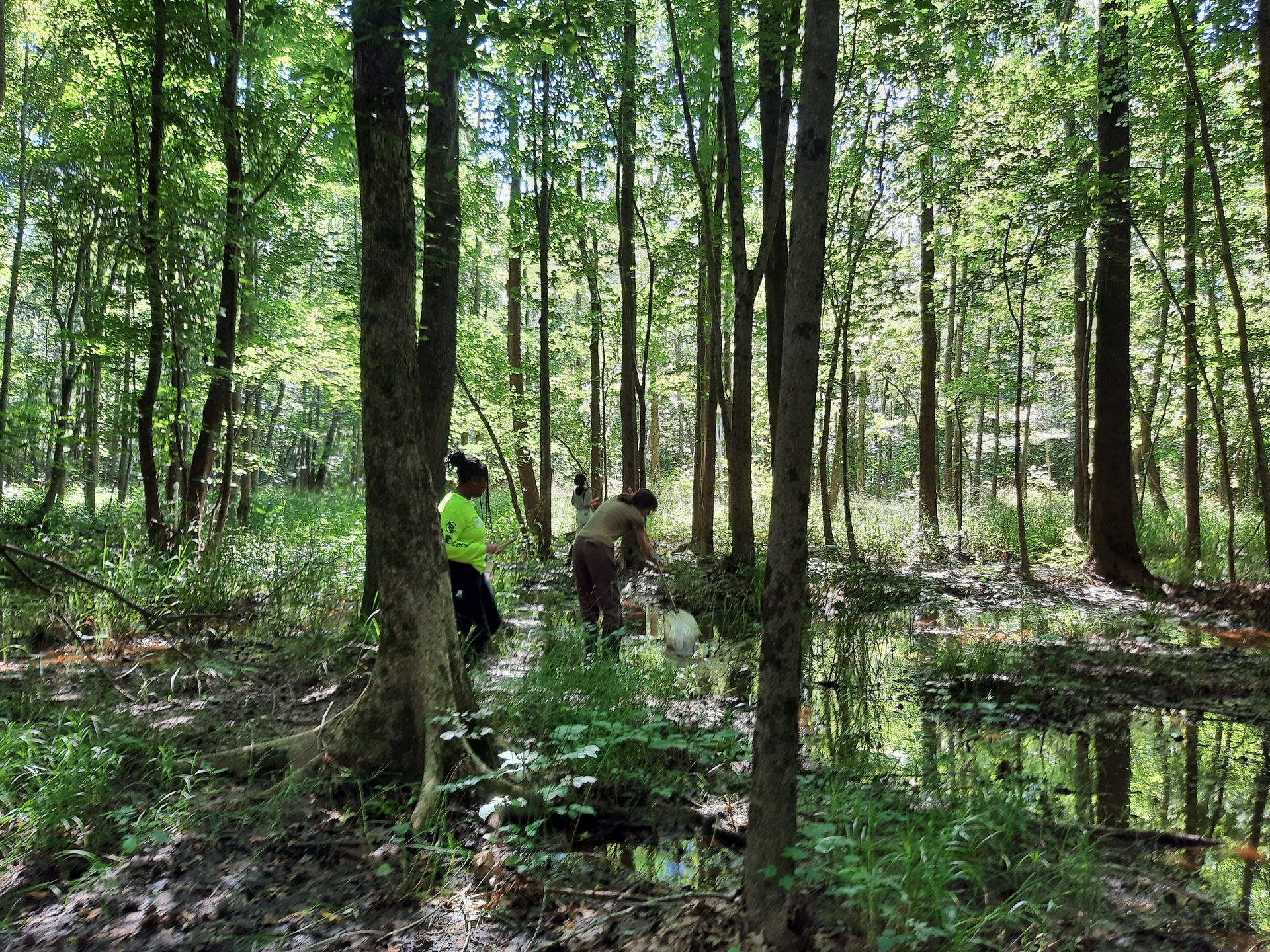
At this time of year, we focus on vegetation surveys along with hydrology and water quality. We have several reasons for this- for one, many of the plants we encounter still have mature leaves, are in bloom, or have fruited, which makes them much easier to identify. Our vegetation surveys can be somewhat intensive, depending on how many plants are located within the designated survey area. There’s lots of crawling around with plant books, lists, and photo taking to ensure we are capturing all of the species growing in the plot! We are very grateful for our plant-savvy volunteers who responded to our call for this monitoring season.

Dear Wetland Supporters: The Board of Directors provides guidance and oversite to the organization. Board members serve 3-year teams and every year one-third of the board changes. I thought it would be good hear hear from our outgoing and in coming Vice Presidents about their hopes for the organization. Heather Clarkson has been a board member since 2018 and served as the Vice-President for the past 3 year. Luckily for us, she is going to stay as a general board member for another term.

Greetings Wetland Supporters, I attended the National Association of Wetland Managers (NAWM) conference at the National Conservation and Training Center near Shepherdstown, WV. I have always said that this annual conference is one of the best to attend because of its relevance and timeliness to wetland professionals. There were really great presentations and you can see the agenda here . I was also invited to participate in a panel discussion on the Benefits of Regional, State, and Tribal Wetland Working Groups . I talked about our partnerships with stakeholders to help them find solutions to their flooding problems (e.g., Stony Run , Parkers Creek, Lumbee Cultural Center, the Gullah-Geechee), our partners with the Volunteer Wetlands Monitoring Program (NC State University, RTI International, and the Partners for Environmental Justice dealing with Walnut Creek. I also talked about our involvement in state initiatives including the (NC) Natural and Working Lands Initiative and the NC Salt Marsh Action Plan . Also on the panel was Tracy Hames, the Executive Director of the Wisconsin Wetlands Association , and he discussed a wetland workgroup that included state legislators, members from the governor’s office, realtors, homebuilders, wetland scientists, and members of the interested public. This group discusses wetland issues such as protection, given the Sackett case. And because of the diversity of the group, the Wisconsin legislature and governor passed legislation to provide greater protection for wetlands. I talked extensively with Tracy and Erin O’Brien (also of Wisconsin Wetlands Association) about this workgroup and how we might implement one in NC. So stay tuned. I had several good conversations and one in particular was with Molly Martin from EPA Region 4. She is very excited about our new Wetlands Program Development Grant to expand our Volunteer Wetlands Monitoring Program. Another good conversation was with Andy Robertson of Saint Mary’s University. He was estimating wetland protection loss for the state of New Mexico and he said that as much as 85% of the wetlands would lose their protection. Just remember the Carolina Wetlands Association is still working on ways to reverse the loss of wetland protection in the Carolinas. One thing you can do is write or call your state representatives and tell them we need to protect our wetland resources. And consider making a donation to help us continue the fight for our wetlands. So when exploring a wetland, think about what you can do to help make sure your wetland is protected. Rick Savage, Executive Director

We got to enjoy some beautiful weather for our June monitoring. We once again monitored water quality, hydrology, and surveyed for amphibians. Thank you to all who joined us this month! We participated in the Society for Ecological Restoration’s Make a Difference Week and picked up litter from our sites as we monitored. This wasn’t out of the ordinary for us, as we always pick up trash when we go. Our wonderful volunteers like to leave our sites cleaner than when they found them. Luckily, thanks to great management, most of our sites tend not to be pretty clean from the start. Although we saw fewer amphibians than in our previous monitoring sessions we did see a number of adult frogs and salamanders. You can view our observation on our iNaturalist page .

Wetland monitoring is important not only for the data we collect, but also to provide hands on education about why wetlands matter. Wetlands can provide so many benefits to humans and the environment, including creating habitat , flood reduction , filtering out pollution , settling sediment, storing carbon, recharging aquifers that we rely on for drinking water, and providing recreation opportunities for humans ! While not every wetland provides all of these services, this March we experienced many of these benefits during our monitoring visits. Habitat Wetlands provide important habitat for many species. This spring we conducted amphibian surveys at each of our sites and saw lots of amphibians! Wetlands are very important for the lifecycles of many amphibians who live in them, rely on them for food and habitat, or use them as nurseries to lay their eggs and protect their young. Unlike lakes and streams, ephemeral wetlands are not wet year-round. The periodic drying of surface water in these wetlands prevents them from being habitat for fish which may eat young salamanders. Our spring wetlands made a great nursery for amphibians and provide habitat for adults as well. We saw: mating American toads spotted salamander egg masses larval marbled salamanders northern cricket frogs a southern leopard frog upland chorus frogs northern dusky salamanders southern two-lined salamanders There were also several frogs that we couldn’t catch a picture of fast enough to identify. You can view our observations on our iNaturalist page .
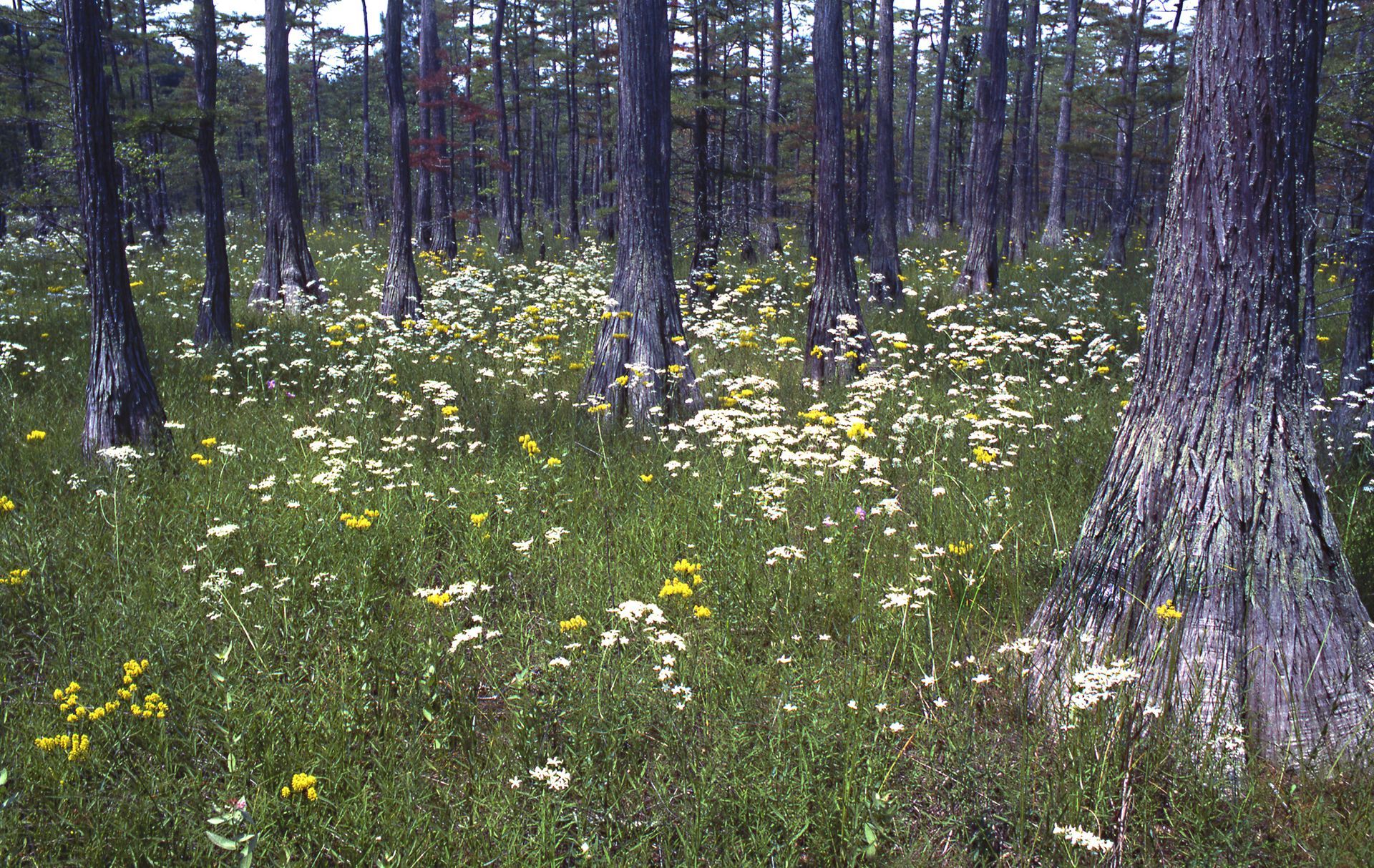
Greetings Wetland Supporters: On February 12, 2024, North Carolina Governor Roy Cooper issued Executive Order (EO) 305 which is geared toward protecting wetlands that recently lost federal protection under the Clean Water Act. You can read the entire Executive Order here: https://governor.nc.gov/executive-order-no-305/open . What is the basis of the Executive Order? Let me tell you what caused EO 305 and the role the Carolina Wetlands Association played to help increase wetland protection in the state. It began with the Natural and Working Lands (NWL) initiative started by the Governor’s office based on EO 80 to address climate change impacts. The goal of the NWL initiative was to develop a plan to restore and preserve wetlands, forests, and other lands to sequester carbon and in the process provide co-benefits to communities. The Natural and Working Lands Action Plan was the result of the initiative and Carolina Wetlands Association was a significant contributor. How did wetlands lose protection? The Sackett v. EPA case resulted removing protection from millions of acres of wetlands in the Carolinas. North Carolina had a statute to protect these wetlands, but the recently passed 2023 NC Farm Bill eliminated that protection and limited North Carolina’s wetland protection be no more than the Federal protection. These changes resulted losing protection of about 60% of our wetlands as determined by the NC DEQ and probably a similar amount in South Carolina. How will the new Executive Order Protect Wetlands? The Carolina Wetlands Association work with several other concerned organizations (such as the Southern Environmental Law Center, NC Conservation Network, NC Wildlife Federation, and River Keepers) to attempt to find ways to reduce the devastating impact of these decisions. The result was EO 305 which Governor Roy Cooper announced and signed on February 12, 2024. The goals of the Executive Order are to: Permanently preserve 1,000,000 new acres of natural lands with special focus on wetlands Restore or reforest 1,000,000 new acres of North Carolina’s forests and wetlands Plant 1,000,000 trees in urban areas across the state This EO does not change to permit requirements or the jurisdictional wetlands definitions, but it does prioritize wetlands conservation. highly recommend reading the entire Executive Order. Your Carolina Wetlands Association has played a significant role in events leading to developing EO 305 and we will continue to do everything we can to continue this effort to protect our wetlands. Please think about how you can help the Association continue this work as we need to do so more than ever. So, when you explore that wetland, think about whether it continues to be protected! Rick Savage, Executive Director
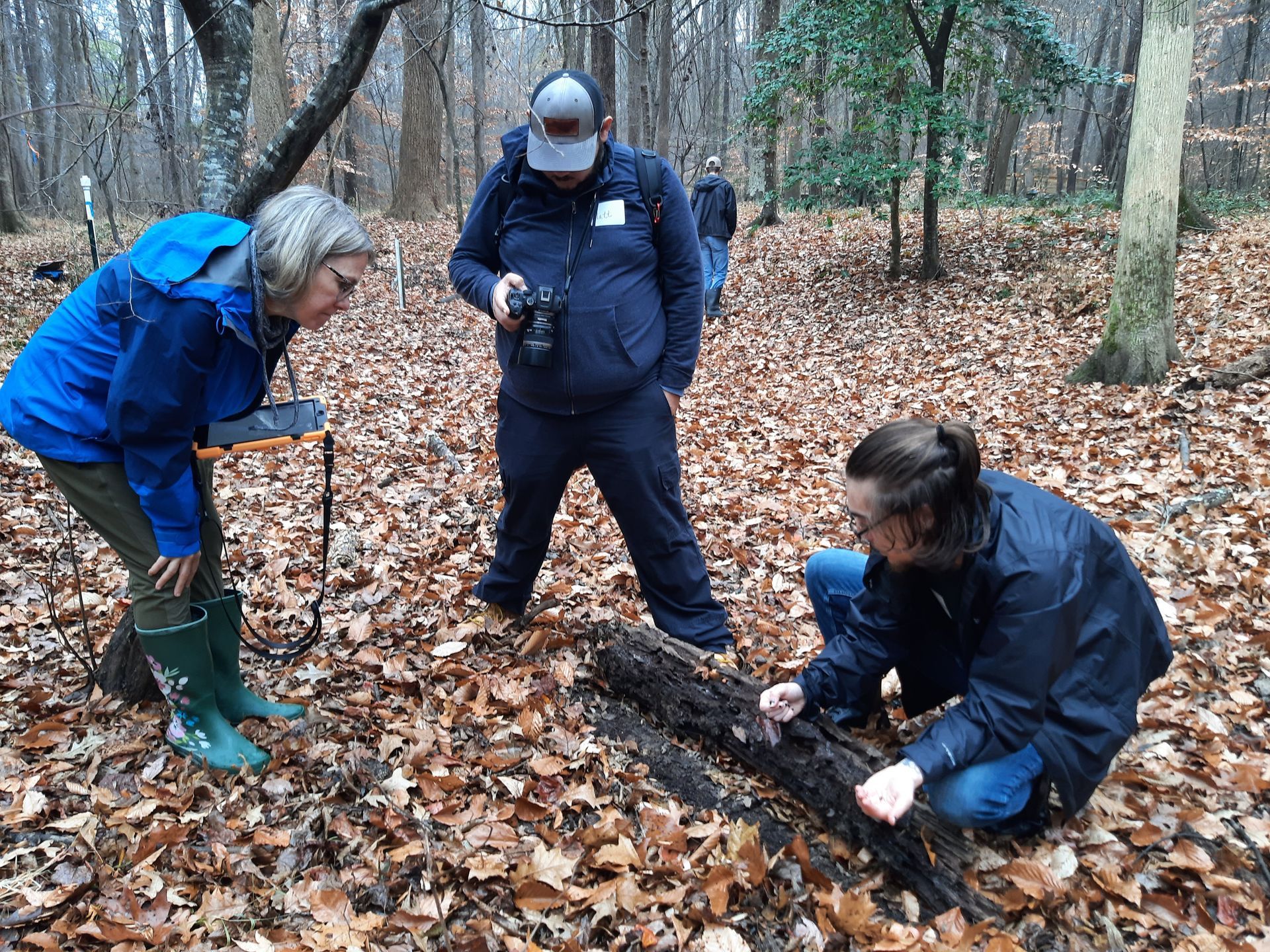
We always try to emphasize to our volunteers that wetlands do not always look wet! Despite the rain, this was clear in our most recent round of monitoring. With the recent end of the growing season at our sites and the abnormally dry weather this Fall, our sites were looking drier than usual. Particularly at Hemlock Bluffs Nature Preserve, where water levels in our monitoring wells were at or below our sensor levels, over 5 feet below ground. Both of the pools where we normally take water samples were completely dry. This marks the second monitoring event for which we were not able to take any water quality samples at Hemlock Bluffs. Hopefully, we will get more rain soon!



